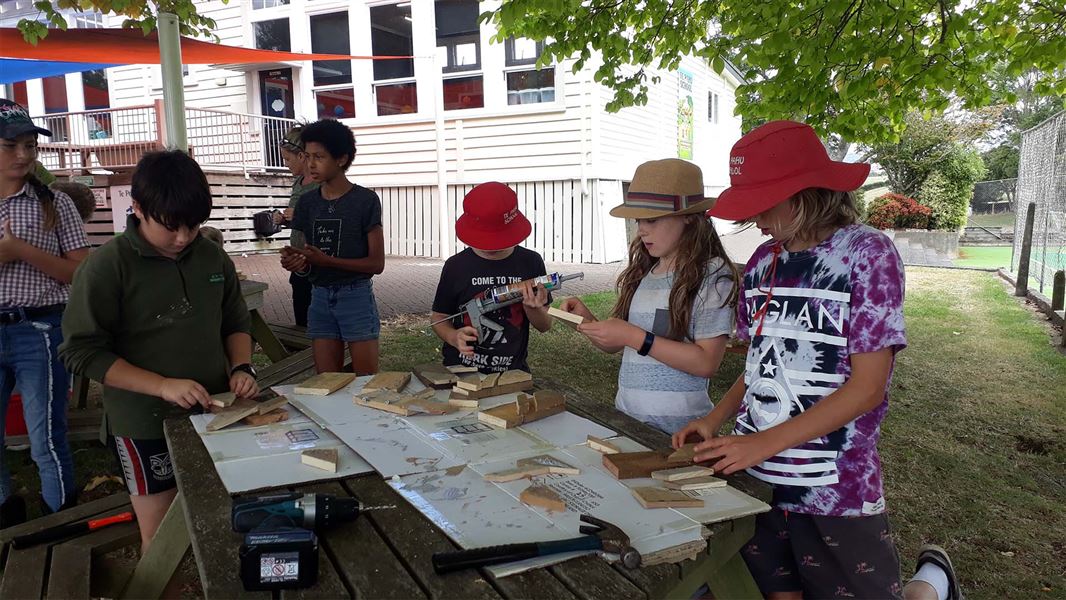Archived content: This media release was accurate on the date of publication.
Date: 11 June 2020
Students from the small rural school, about 20 minutes’ drive west of Hamilton, have made “wētā hotels” for the ancient insects as part of three-way partnership also involving the Te Pahu landcare group, Te Pahu School and Department of Conservation.
Nardene Berry, a Te Pahu School parent and also spokesperson for Te Pahu landcare group, says DOC Biodiversity Ranger Cara Hansen suggested the students could create the wētā hotels to continue ongoing conservation learning at the school, and take advantage of 18 years of riparian planting near the school on a buffer between farmland and nearby Pirongia Forest Park.
“Just before the COVID-19 lockdown, we made 100 wētā hotels,” she says. “Cara had done the most fantastic job: she’d got all the pieces pre-cut, and the kids just had to glue them together, drill and hammer a few bits, all with some parent and members of the Te Pahu landcare group’s help.”
Once COVID-19 movement restrictions eased, DOC arranged for placement of the wētā hotels on the lower slopes of Pirongia and through the riparian planting. The initial placement of wētā hotels will give some baseline data to determine interest from the insects, which are an important biodiversity indicator.
Trapping of predators which prey on the insects will follow - potentially from August - and if wētā occupancy continue to increase over the course of the year, it will show the combined effort of planting, habitat creation and pest control has been successful.
And although wētā don’t quite have quite the cute factor of birds, lizards or frogs, that hasn’t deterred the children, Nardene Berry says.
“The kids are really open to the idea of wētā monitoring. We’re hoping we’ll be able to go and have a sneaky look at some of the wētā hotels in the next few months, and hopefully if there’s wētā in there, the kids won’t be too freaked out by that!”
Cara Hansen says the community’s planned predator control efforts will supplement ongoing and upcoming work undertaken by DOC, Waikato Regional Council and Pirongia Te Araroa o Kahu Restoration Society on and around Mt Pirongia.
“It’s really encouraging to see the efforts and enthusiasm of the Te Pahu School community. Every little bit adds to the landscape-scale control for longer lasting biodiversity gains,” she says.
The next step will be protection of what has been restored, and Mt Pirongia has been selected as a site for DOC’s 2020 Tiakina Nga Manu predator control programme, she says.
Te Pahu School Principal Meegan Dunn says the wētā hotels are part of a wider environment and conservation curriculum the 115-student school is developing, with an emphasis on Mt Pirongia. Enviro Leaders in Year 7 and Year 8 play a key role in developing environmental education alongside Nardene Berry and parent Liz Overdyck.
“This year along with our wonderful volunteers we have employed a part-time teacher to foster a love of science and environmental studies in our school. This is an exciting journey that we are just in the beginning stages of,” she says.
Contact
For media enquiries contact:
Email: media@doc.govt.nz
